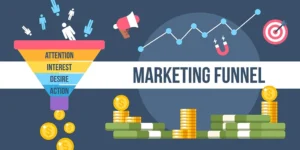Introduction
Programmatic ad buying and selling have revolutionized the digital advertising by automating purchasing and placing ads. This method leverages sophisticated algorithms and real-time data to target the right audience at the right time, optimizing the efficiency and effectiveness of digital marketing campaigns. Here’s a deep dive into the mechanics of programmatic advertising and how it works.
What is Programmatic Advertising?
Programmatic advertising is an automatic means of buying and selling ad inventory in real time using a complicated system of software and algorithms. This approach replaces the traditional, manual ad placement methods, making the process faster, more efficient, and data-driven.
Key Components of Programmatic Advertising
Demand-Side Platforms (DSPs)
DSPs are platforms that enable advertisers to purchase ad impressions in real time. Advertisers use DSPs to set up campaigns, define targeting criteria, and bid for ad placements. DSPs connect to multiple ad exchanges, providing access to vast ad spaces across various websites and apps.
Supply-Side Platforms (SSPs)
Publishers utilise SSPs to manage and sell their advertising inventory. SSPs connect to multiple ad exchanges, allowing publishers to offer their ad spaces to a broad pool of potential buyers. SSPs optimize the selling process by ensuring inventory is sold to the highest bidder in real-time auctions.
Ad Exchanges
Ad exchanges are digital markets that buy and sell ad impressions. They act as intermediaries between DSPs and SSPs, facilitating the real-time bidding (RTB) process. Ad exchanges ensure transparency and efficiency in the buying and selling by providing a central transaction platform.
Data Management Platforms (DMPs)
Data management platforms (DMPs) collect and analyse data from a variety of sources, including websites, social media, and CRM systems. This information is utilised to develop precise audience segments that may be targeted with customised advertisements. DMPs play a crucial role in programmatic advertising by providing the data for precise targeting and personalization.
The Programmatic Ad Buying Process
Setting Up the Campaign
Advertisers start by setting up their campaigns in a DSP. This involves defining the campaign objectives, budget, targeting criteria (such as demographics, interests, and behaviors), and creative assets. Advertisers also set their bidding strategy, determining how much they will pay for each impression.
Bidding and Auction Process
Once the campaign is live, the DSP bids for ad impressions in real-time auctions conducted by ad exchanges. When a user visits a website, the ad exchange sends a bid request to multiple DSPs, providing details about the user and the available ad space. DSPs evaluate the bid request based on the campaign’s targeting criteria and bid accordingly.
Winning the Bid
The SSP conducts a real-time auction, and the highest bid wins the ad impression. The winning ad is delivered to the user’s device within milliseconds. This process ensures that advertisers reach their target audience at the optimal moment, maximizing the effectiveness of their ad spend.
Ad Delivery and Performance Tracking
Once the ad is delivered, its performance is tracked and analyzed. Metrics such as impressions, clicks, conversions, and return on ad spend (ROAS) are monitored to evaluate the campaign’s effectiveness. This data is used to make real-time adjustments and optimizations to improve performance.
Benefits of Programmatic Advertising
Efficiency and Automation
Programming ads automates the buying and selling process, decreasing the need for manual involvement while enhancing efficiency. Advertisers may build up and manage many campaigns at once, saving time and resources.
Precision Targeting
With access to enormous volumes of data, programmatic ads allows for accurate targeting. Advertisers can reach specific audience segments based on detailed criteria, improving the relevance and effectiveness of their ads.
Real-Time Optimization
Programmatic advertising allows for real-time optimization of campaigns. Advertisers can monitor performance metrics and adjust on the fly, ensuring their campaigns are always optimized for the best results.
Scalability
Programmatic advertising provides access to vast ad spaces across multiple platforms, enabling advertisers to scale their campaigns easily. This scalability ensures that advertisers can reach a large audience and achieve their marketing objectives.
Challenges of Programmatic Advertising
Ad Fraud
Ad fraud is a significant challenge in programmatic advertising. Fraudsters can generate fake impressions or clicks, leading to wasted ad spend. Advertisers must implement robust fraud detection and prevention measures to protect their campaigns.
Transparency
The complexity of the programmatic ecosystem can lead to transparency issues. Advertisers may need help understanding where their ads are placed and how their budget is spent. Transparency in the supply chain is critical for increasing confidence and optimising ad spending.
Privacy Concerns
With growing worries about the security of data, programmatic ads must follow standards such as GDPR and CCPA. Advertisers must ensure that their data collection and targeting practices are transparent and compliant with privacy laws.
Conclusion
Programmatic advertising has transformed digital marketing by automating and optimizing ad buying and selling processes. Its efficiency, precision targeting, real-time optimization, and scalability make it an invaluable tool for modern marketers. However, ad fraud, transparency, and privacy concerns must be addressed to harness its potential fully. By understanding the mechanics of programmatic advertising and implementing best practices, advertisers can significantly improve their campaign performance and ROI.
To know more about Programmatic Ads, Please visit https://paypercampaign.com





